Fall Perennials That Will Give Your Cottage Garden the Wow Factor
Are you looking for fall perennials that will give your cottage garden the “wow factor”? Follow along as I share some of my favorite autumn perennial plants to grow in your flower garden beds this season.
As the bright summer colors start to fade and the earthy tones of autumn take over, I always appreciate the beauty and charm that fall perennials add to the cottage garden.
In this post, I’ll share some of the best fall perennials that will transform your cottage garden into a tapestry of seasonal beauty during the fall months.
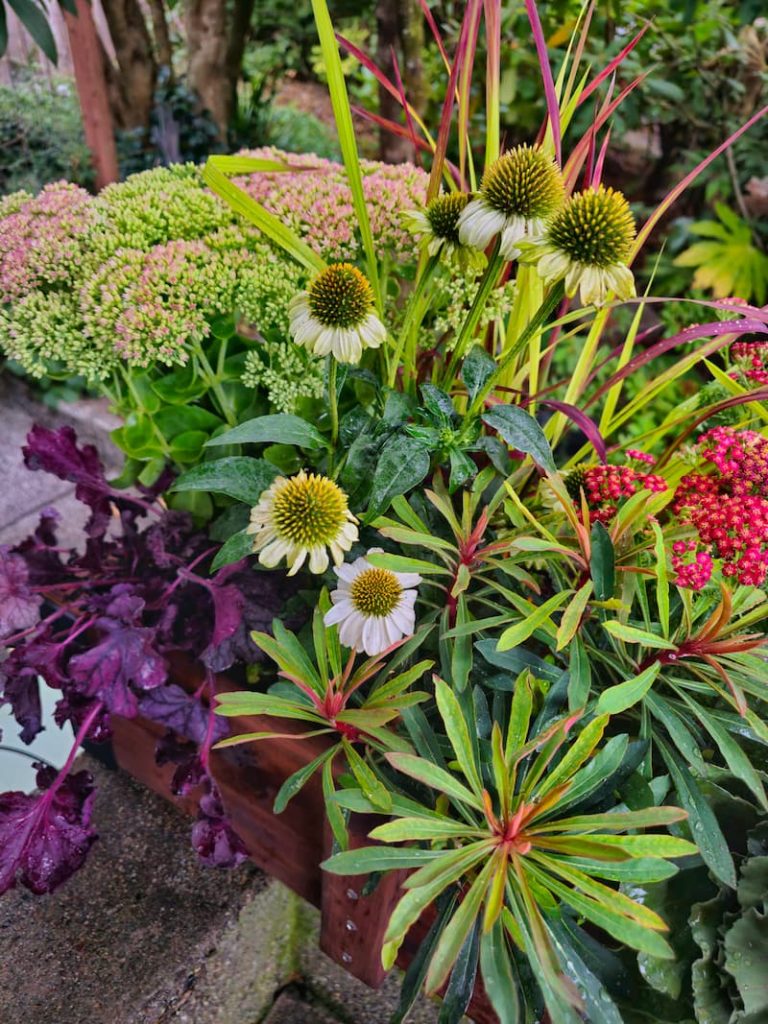
As an Amazon affiliate, I earn from qualifying purchases at no extra cost to you. My blog contains other affiliate links as well for your convenience. Click here to read my privacy policy.
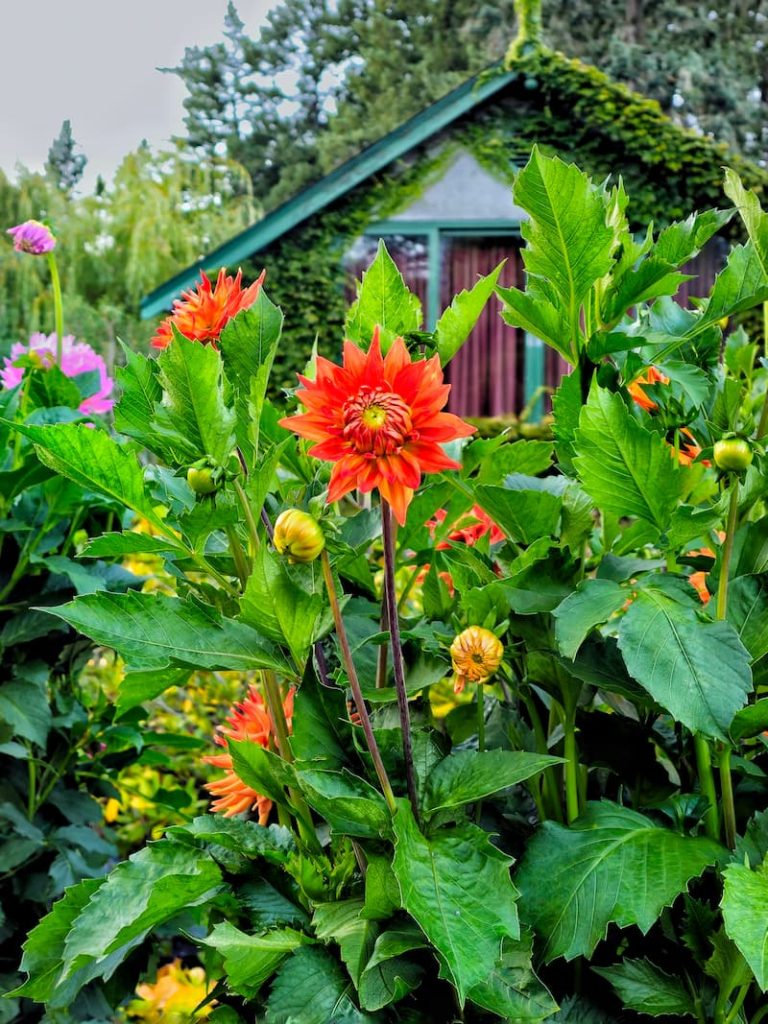
What are Fall Perennials?
Fall perennials are perennial plants that are known for their ability to bloom and thrive during the autumn season. These plants add color and interest to gardens when many other plants are beginning to fade as the weather cools down.
Autumn perennial plants come in a variety of colors, shapes, and sizes, and they are an excellent choice for gardeners looking to extend the beauty of their gardens into the later part of the year.

Why Fall Perennials are Important to Grow in a Cottage Garden
Fall perennials are valuable to a cottage garden for several reasons, including enhancing its visual appearance, supporting local wildlife, and allowing you to make the most of your outdoor space throughout the autumn season.
Extended Seasonal Interest
Fall perennials extend the visual appeal of your cottage garden well into the autumn months when many other plants are starting to decline. This keeps your garden looking lively and beautiful, allowing you to enjoy it for a more extended period.
Color and Vibrancy
Fall perennials add a burst of color to your garden just when the landscape may be turning drab and monochromatic. Their vibrant blooms in various shades of red, orange, yellow, and purple bring warmth and cheer to your outdoor space.

Pollinator Attraction
Many fall perennials are excellent sources of nectar for pollinators such as bees and butterflies. By including these plants in your cottage garden, you not only support local wildlife but also create a more biodiverse and ecologically friendly environment.
Seasonal Transition
Fall perennials act as a bridge between the seasons, helping to smoothly transition your garden from summer to autumn. They can soften the stark changes in the garden as summer blooms fade, creating a more harmonious and gradual shift.
Cottage Garden Aesthetics
Cottage gardens are known for their casual, romantic, and slightly wild appearance. Fall perennials fit seamlessly into this style, adding a touch of rustic charm and natural beauty that complements the overall cottage garden aesthetic.
Low Maintenance
Many fall perennials are low-maintenance plants and require minimal care once established. This makes them ideal for cottage gardens, which are often a more relaxed and informal gardening style.
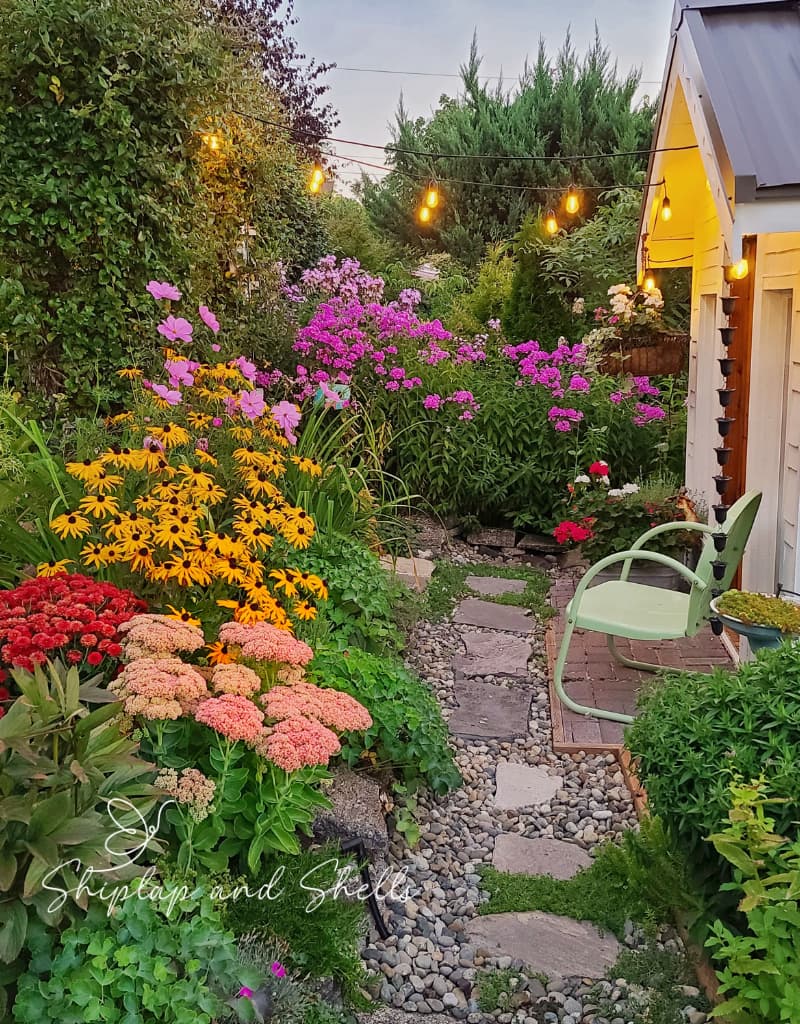
Seasonal Variety
Growing fall perennials adds variety to your garden’s appearance throughout the year. This diversity in plant life ensures that there’s always something interesting and beautiful to see as the seasons change.
Embracing the Season
Celebrate the changing seasons by adding fall perennials to your cottage garden allowing you to fully embrace and appreciate the unique beauty of autumn.
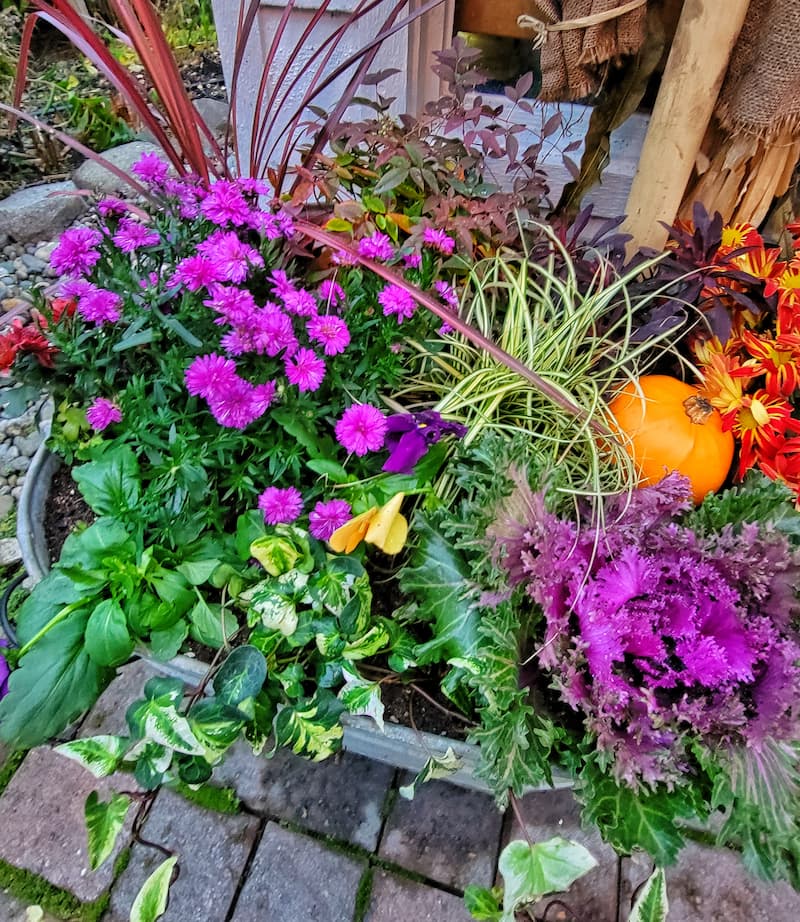
8 Best Fall Perennials for a Cottage Garden
There are many fall perennials you can choose from for your fall garden. Your local nursery or garden center most likely has them in stock this time of year.
Here are some of my favorite fall cottage garden flowers I’m growing this season.
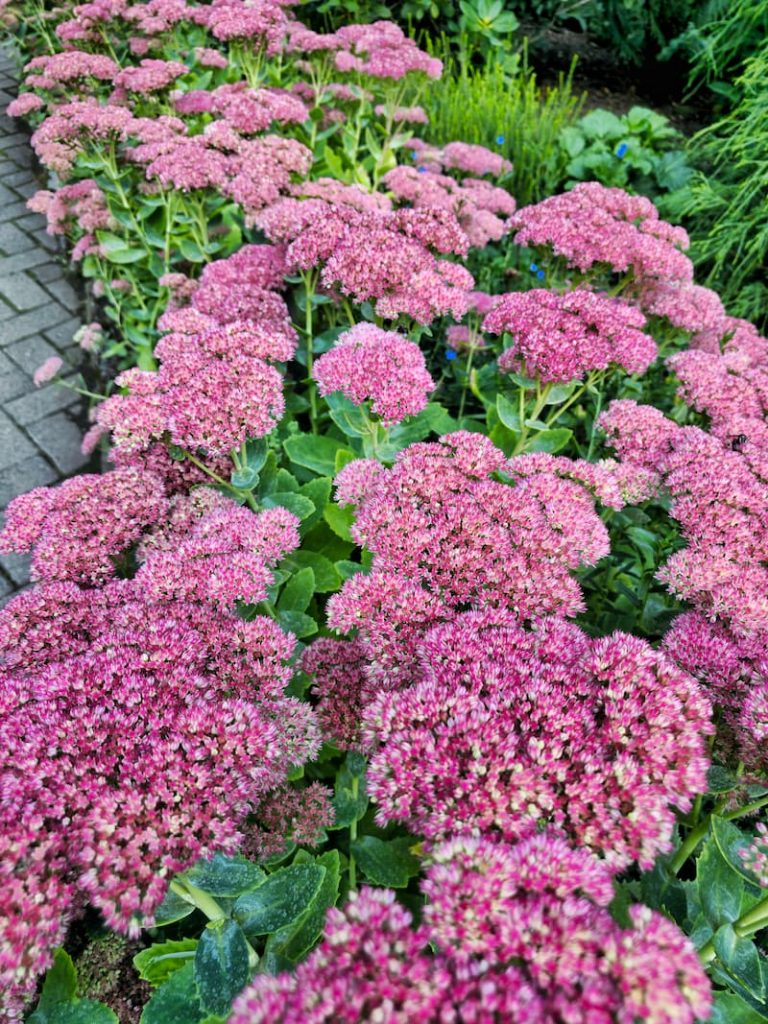
Sedum Autumn Joy
This fall perennial takes on several different looks throughout the year but looks the most stunning in the fall.
Sedums have succulent-like leaves and upright stems, which can provide interesting textural contrast to other cottage garden plants. This contrast adds depth and structure to the garden.
Planting Sedum ‘Autumn Joy’ in a cottage garden for fall provides low-maintenance beauty, supports pollinators, and contributes to the seasonal transition and overall charm of your garden.
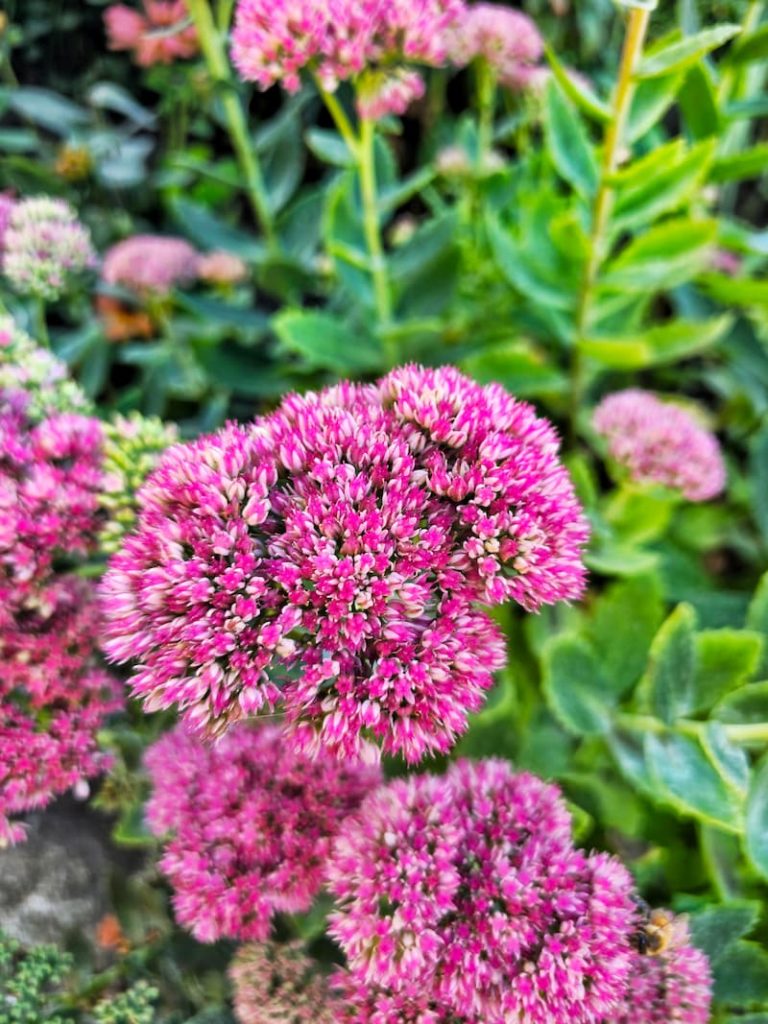
Provides Winter Interest
Even after the growing season ends, the dried seed heads of Sedum ‘Autumn Joy’ can provide some visual interest in your garden during the winter months, especially when covered with a dusting of frost or snow.
| Hardiness Zones | 3-9 |
| Features | Low-maintenance | deer-resistant | drought-tolerant | disease-resistant once established | attracts pollinators |
| When to Plant | Plant in the spring after the threat of frost and before the summer heat. |
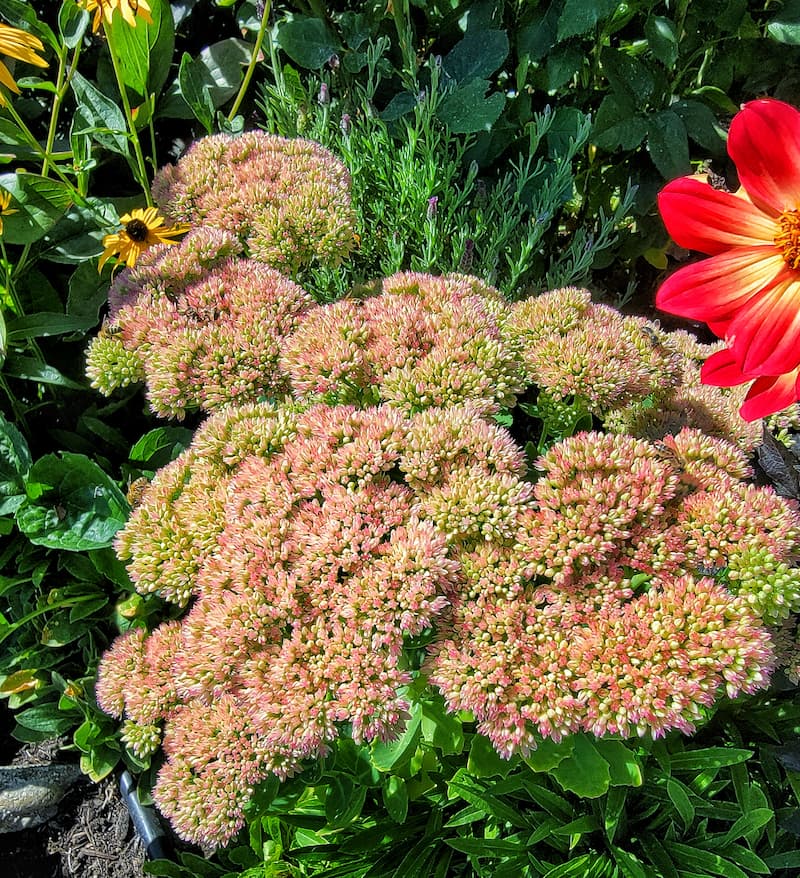
The Life of Autumn Joy
Flowers shift colors as they develop from buds to open blooms.
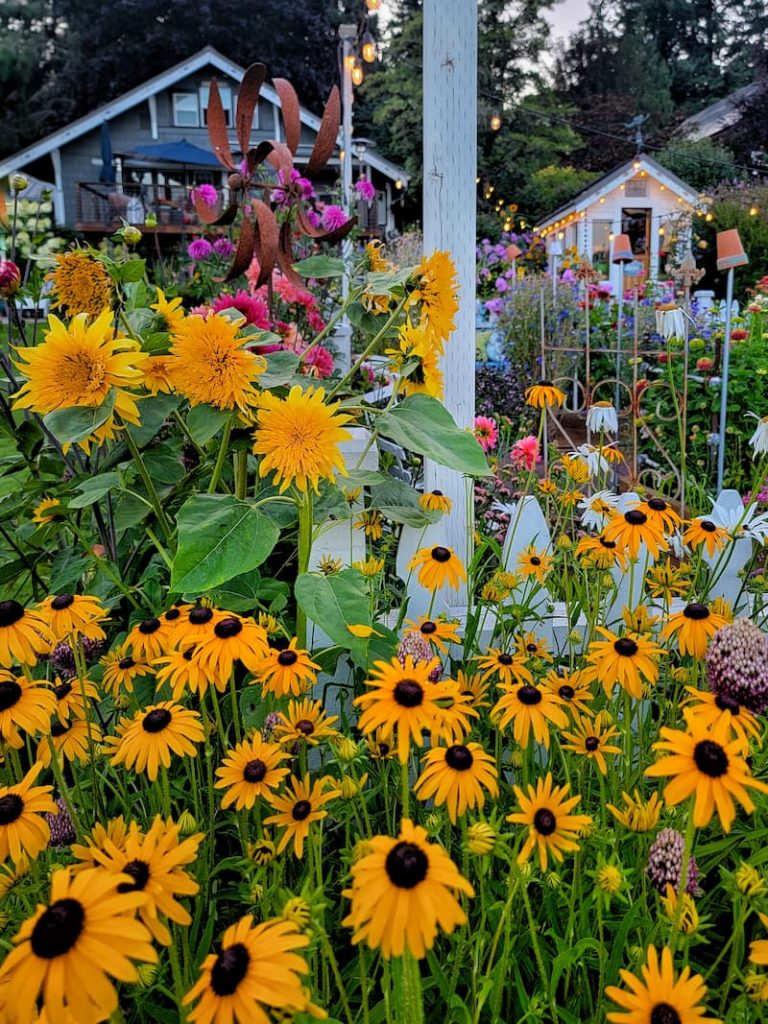
Black-Eyed Susans (Rudbeckia)
With their bright yellow petals and tall stems, black-eyed Susans give a much-needed pop of color to a late summer/early fall garden.
Their cheerful blooms add a splash of color and visual interest to your garden when many other plants are starting to fade.
After the black-eyed Susan flowers have faded, the seedheads can provide winter interest in the garden. Additionally, birds are attracted to the seeds, offering another layer of wildlife interaction in your garden.
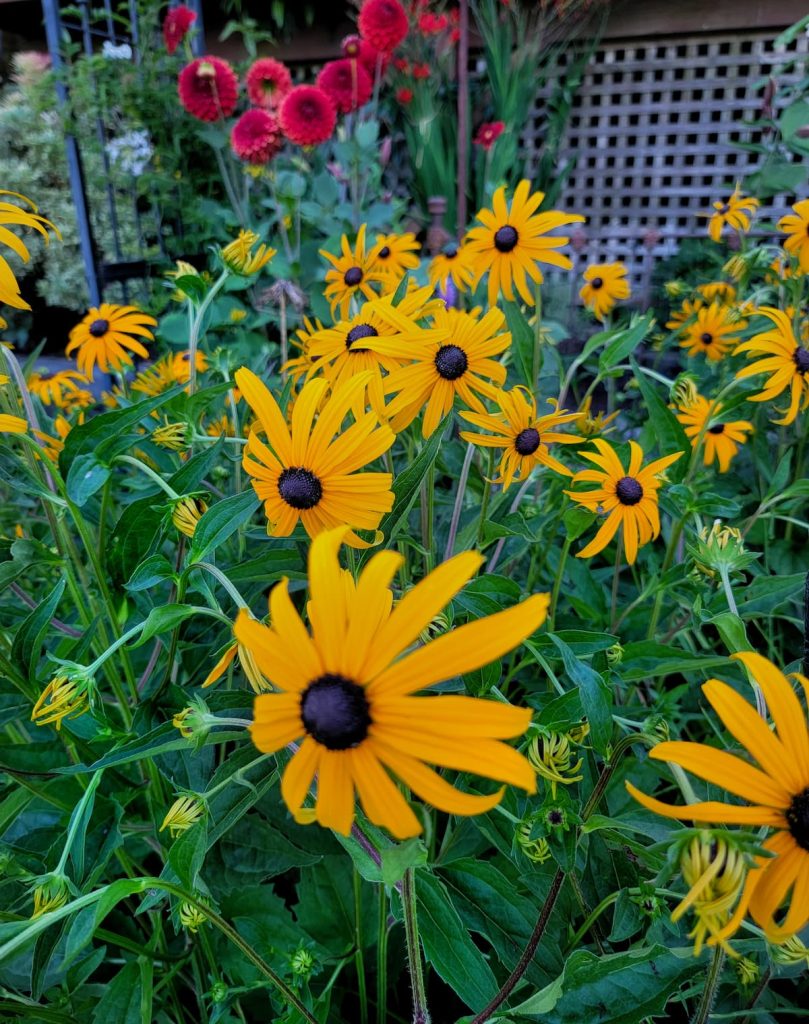
| Hardiness Zones | 3-9 |
| Features | attract pollinators | low-maintenance plant | drought tolerant | long-lasting blooms |
| When to Plant | In the spring after all danger has passed or in the fall. Do not plant in the hot summer. |
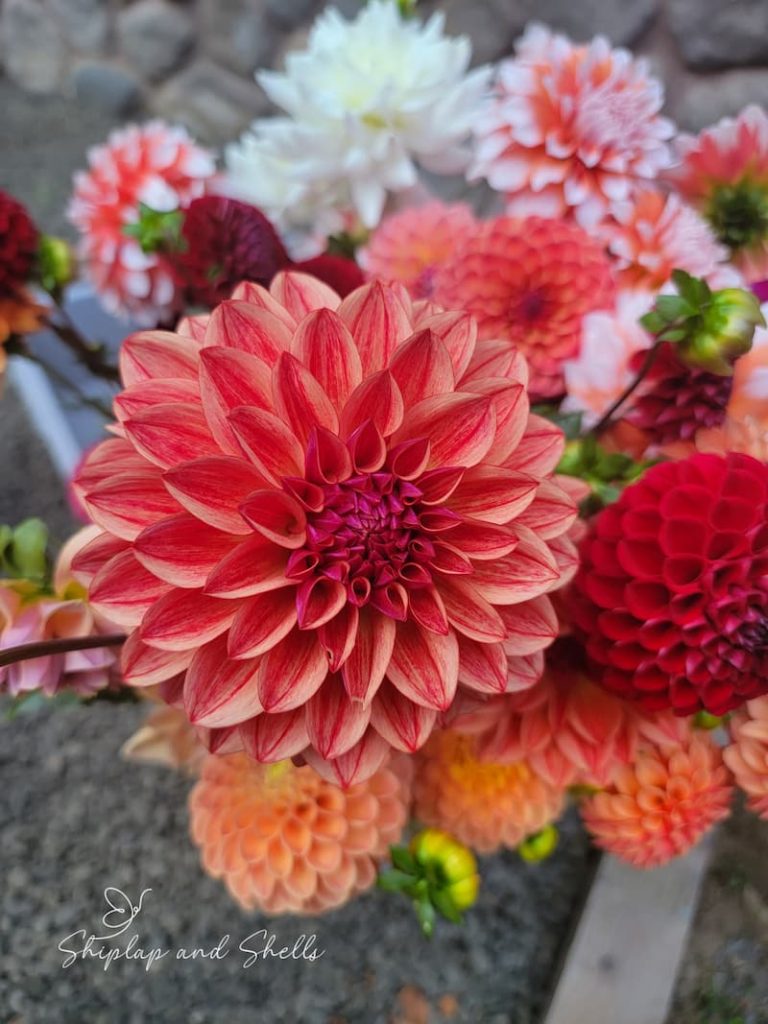
Dahlias
It’s not a secret that dahlias are my favorite fall perennial in the cottage garden.
These stunning flowers take a while to finally produce a bloom or two, usually by the end of July but are definitely worth the wait. Dahlias will continue producing until the first hard frost of the season and do such a beautiful job brightening up the fall garden.
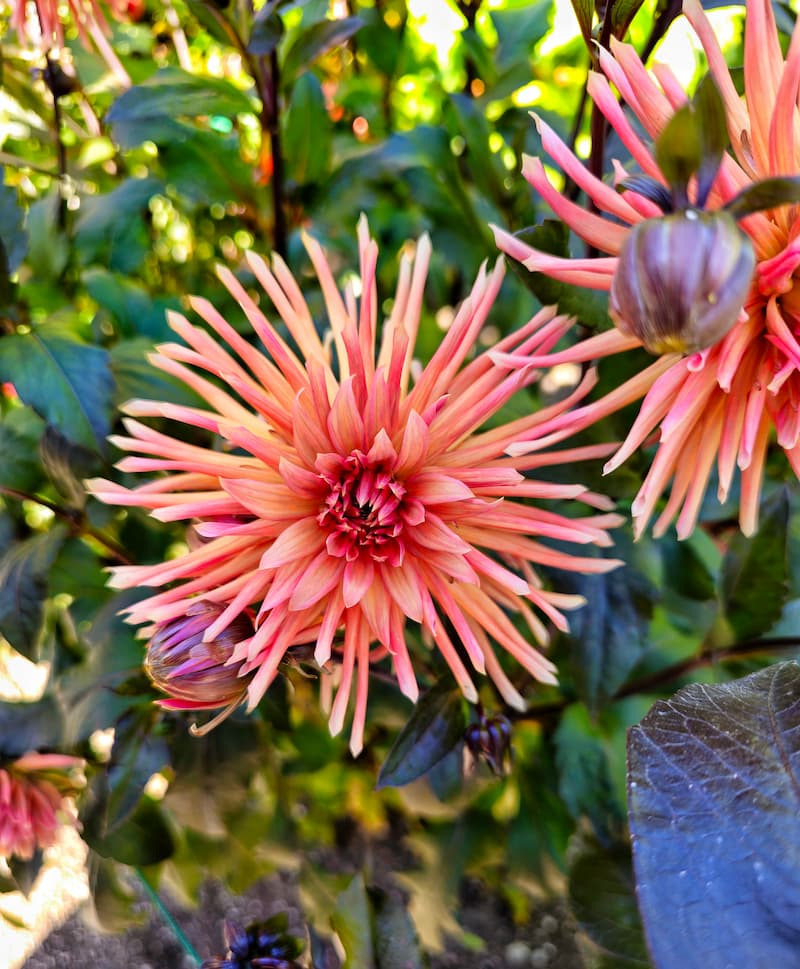
| Hardiness Zones | 6-11 |
| Features | they come in every color you can think of | bloom in fall until the first hard frost of the season | make the most gorgeous cut flowers | the more you cut, the more they produce blooms. |
| When to Plant | Plant tubers in full sun in late spring after danger of frost. |
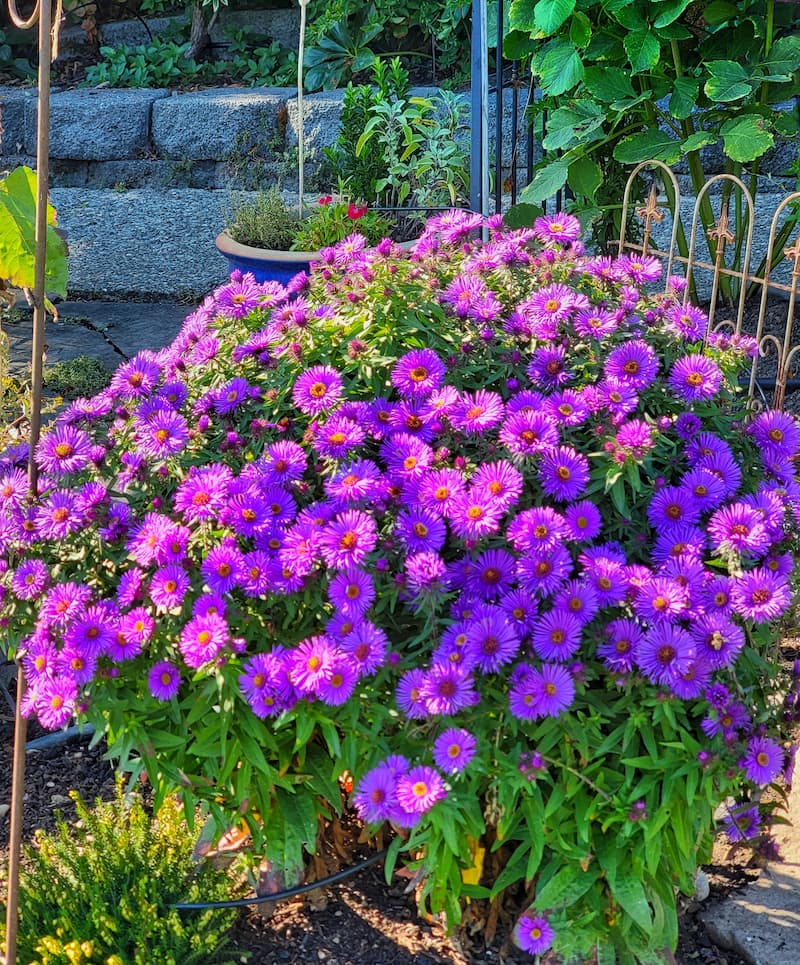
Asters (Aster spp.)
Growing asters in a cottage garden for fall enhances the visual appearance, attracts pollinators, and is a low-maintenance style perennial.
These daisy-like flowers bloom in late summer and fall. Asters bloom in a rainbow of colors, including purple, blue, white, and pink flowers. And late-season pollinators, including bees, butterflies, and hummingbirds love them.
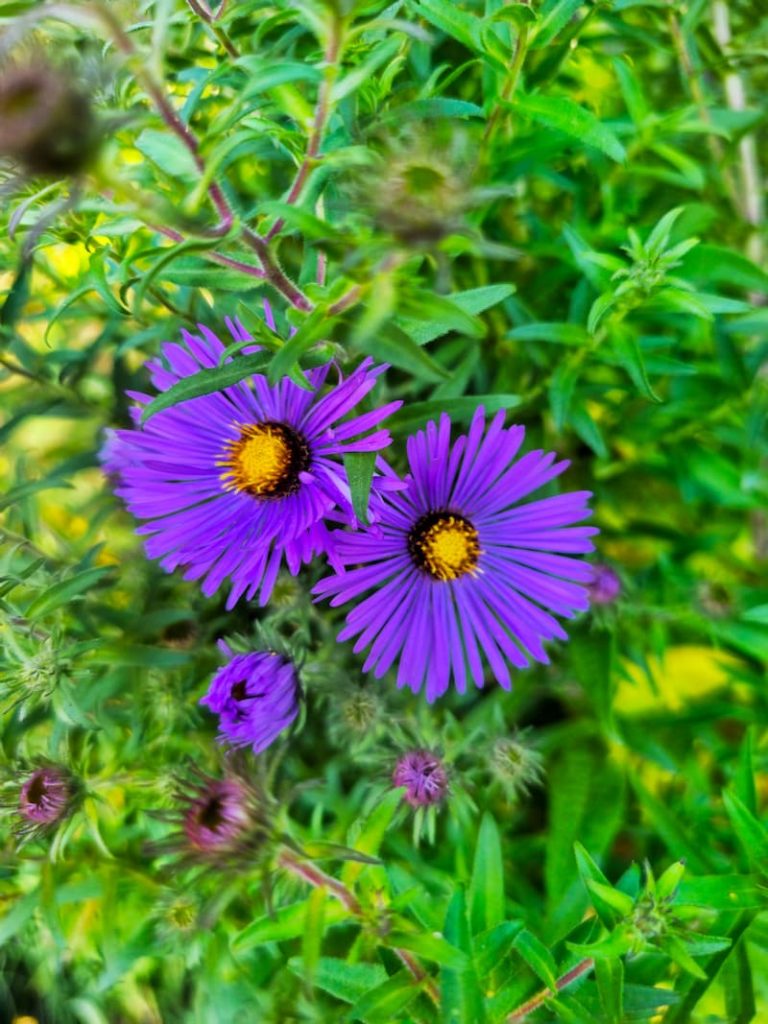
| Hardiness Zones | 3-8 |
| Features | attract pollinators to the garden | low-maintenance | divide root clumps every three years or so for propagation |
| When to Plant | Spring and fall are best to allow the plant to get established before severe hot or cold weather. In the North, plant anytime up to early fall to allow the roots to get established before winter. |
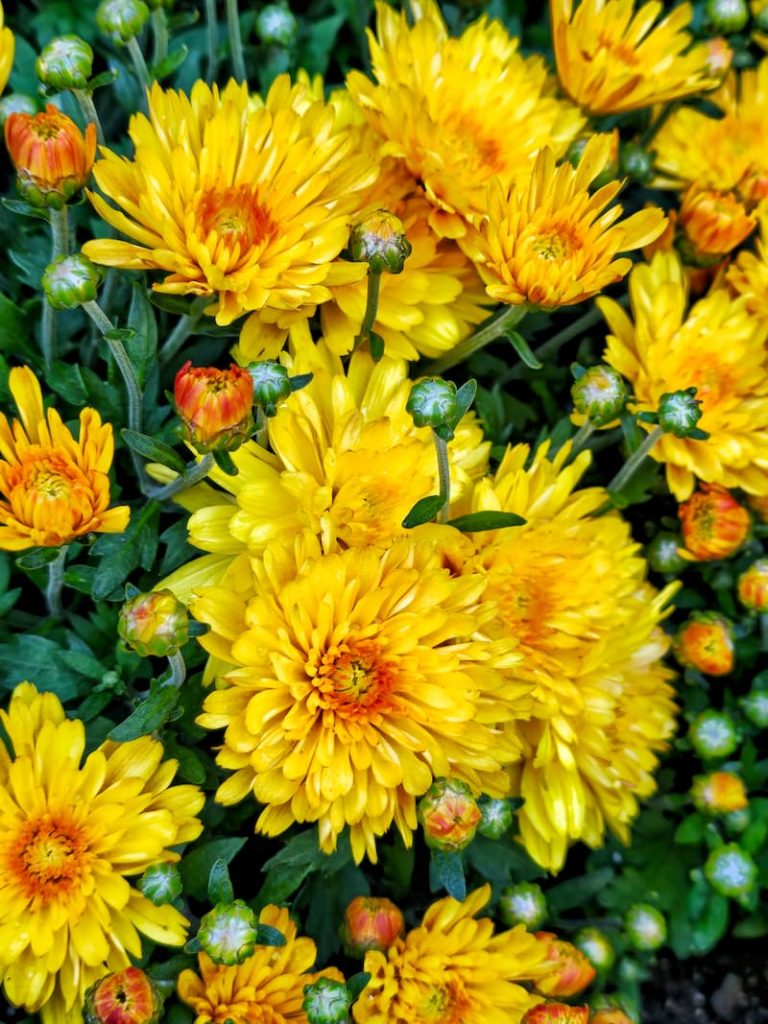
Chrysanthemums
Mums are the classic cottage garden fall perennial with colors ranging from pastel to bright bold hues. For longer-lasting blooms, choose mums with flower buds that are just beginning to open.
To overwinter plants as perennials in colder zones, get the mums into the ground as early as possible in fall. Mulch well after the ground freezes.
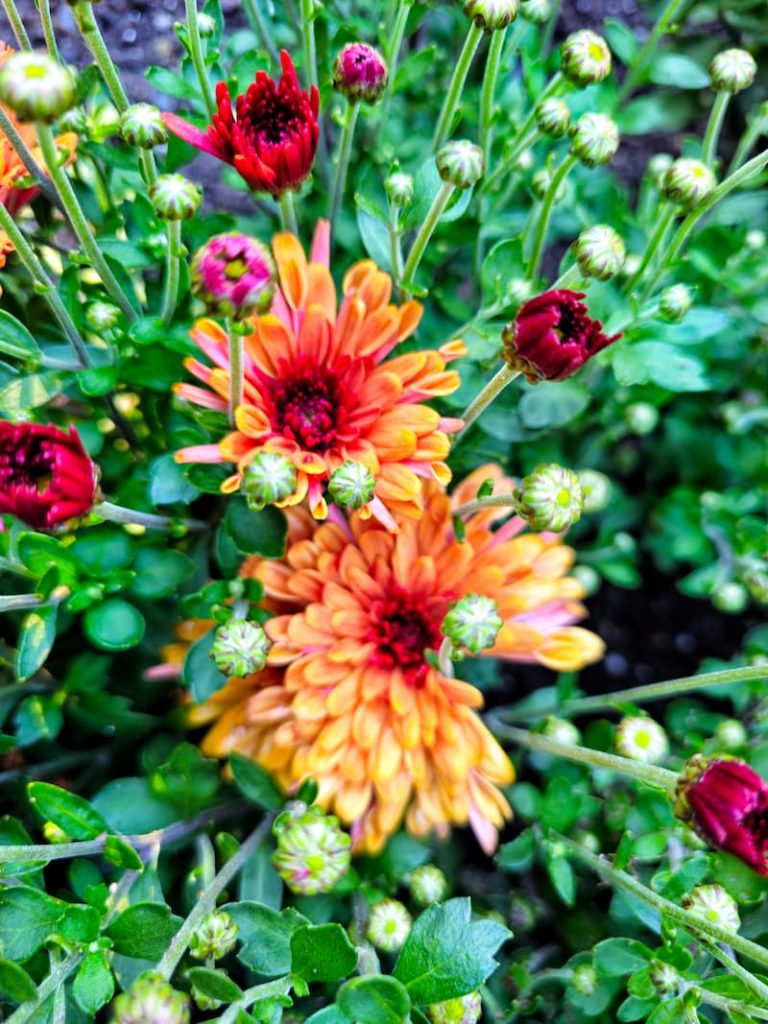
| Hardiness Zones | 4-9 |
| Features | attract butterflies | last for up to two weeks in a flower bouquet | versatile growth |
| When to Plant | plant in early spring or fall at least six weeks before the first hard frost. |
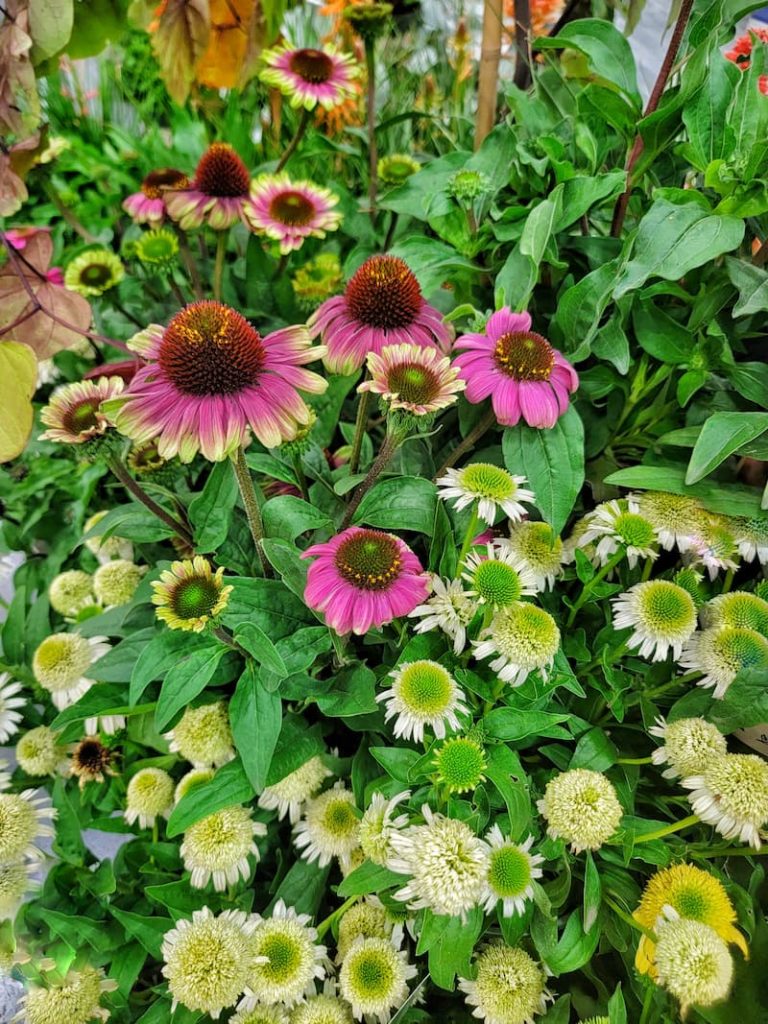
Coneflower (Echinacea)
Coneflowers typically bloom from late spring through summer, and their vibrant flowers often continue into the fall, depending on the variety and local climate.
These flowers add a pop of color to your garden, making them an excellent choice for the transition from summer to fall.
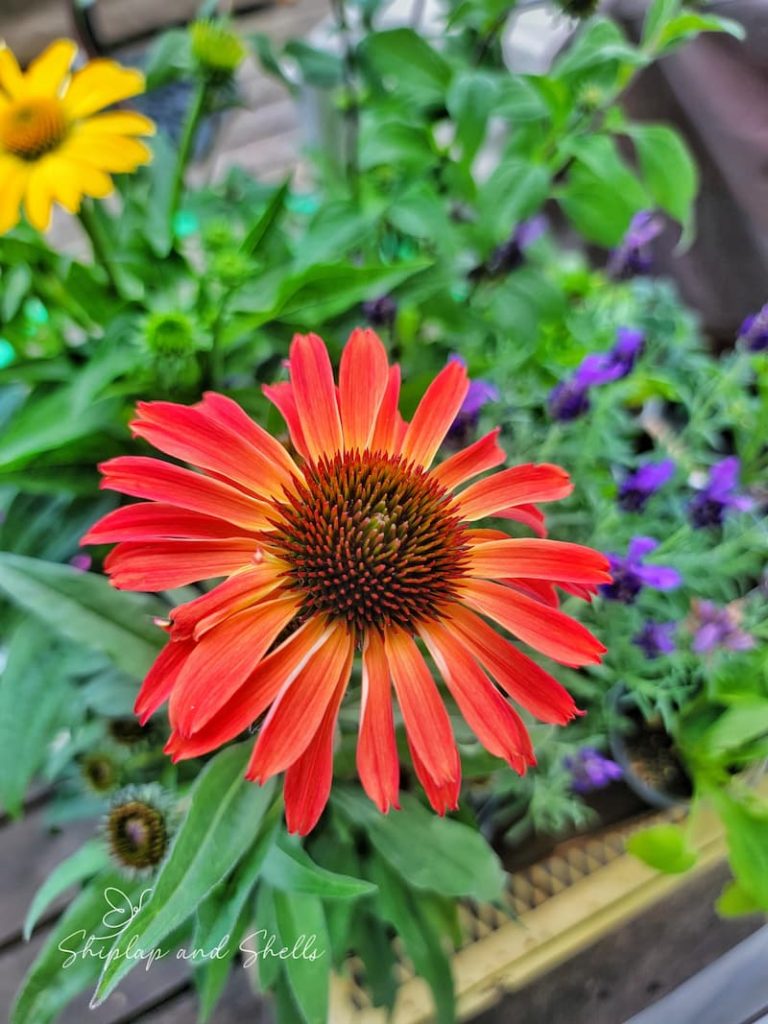
| Hardiness Zones | 4-9 |
| Features | low maintenance | attract pollinators | disease resistent |
| When to Plant | In the spring after any danger of frost. You can also plant in early fall with at least six weeks to establish roots before the first hard frost. |
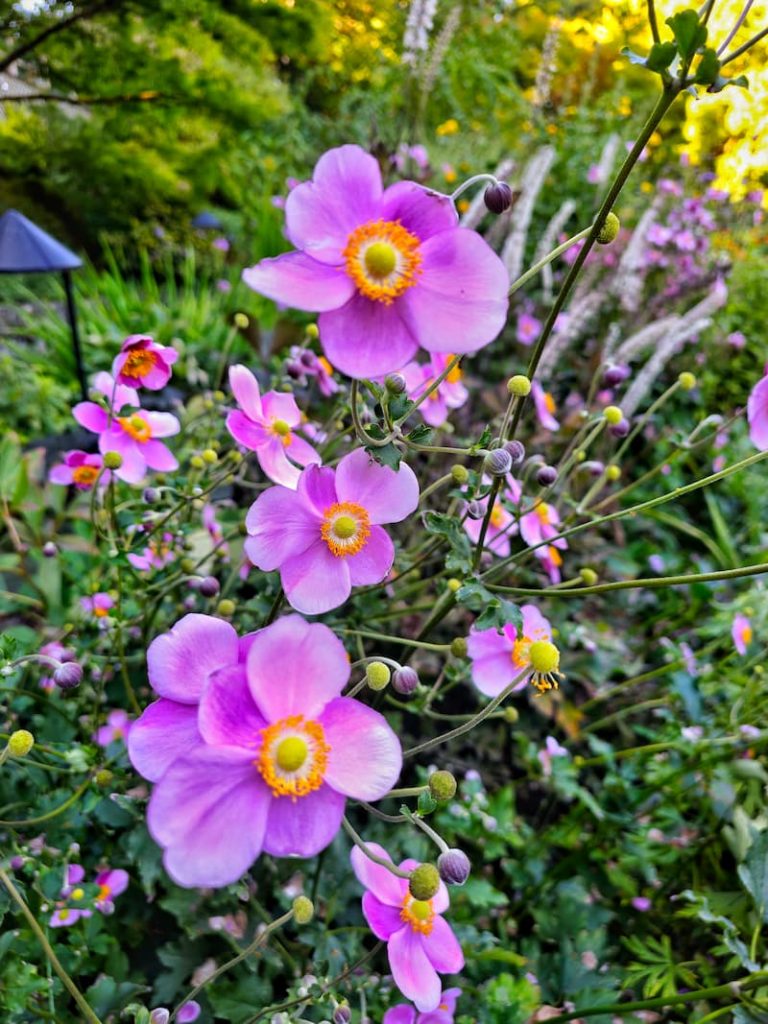
Japanese Anemone
Excellent for marking the transition from summer to fall in your cottage garden, Japanese anemones have delicate paper-like flowers. These come in pink or white flowers, with yellow stamens in the center.
Japanese anemone’s graceful blooms and timeless appeal can enhance the beauty and seasonal interest of your cottage garden as it transitions from summer to fall.
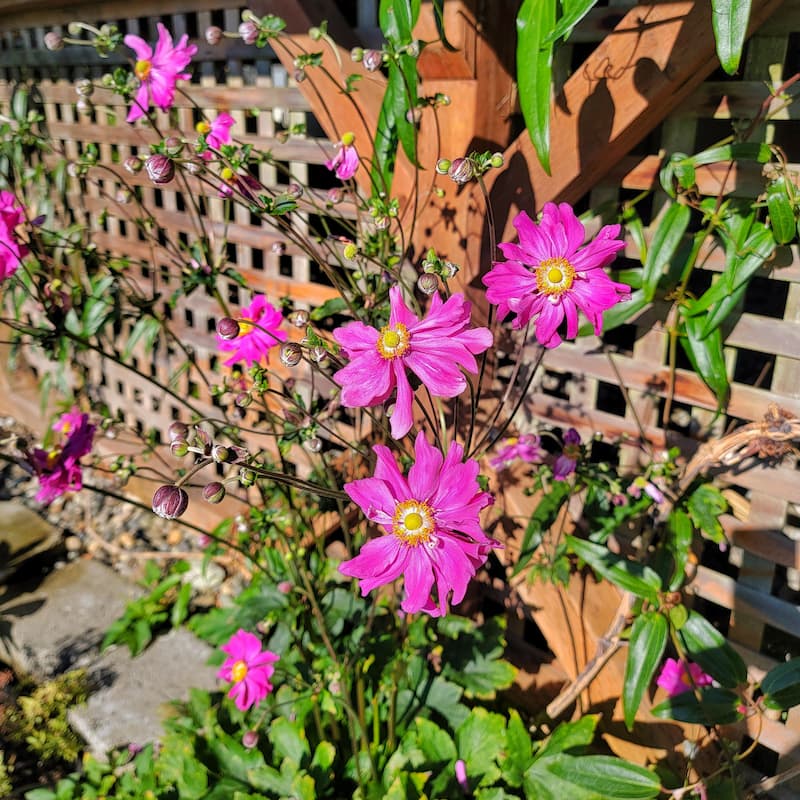
| Hardiness Zones | 4-8 |
| Features | low-maintenance | attract pollinators | drought-tolerent |
| When to Plant | After the danger of frost in spring until early fall. |
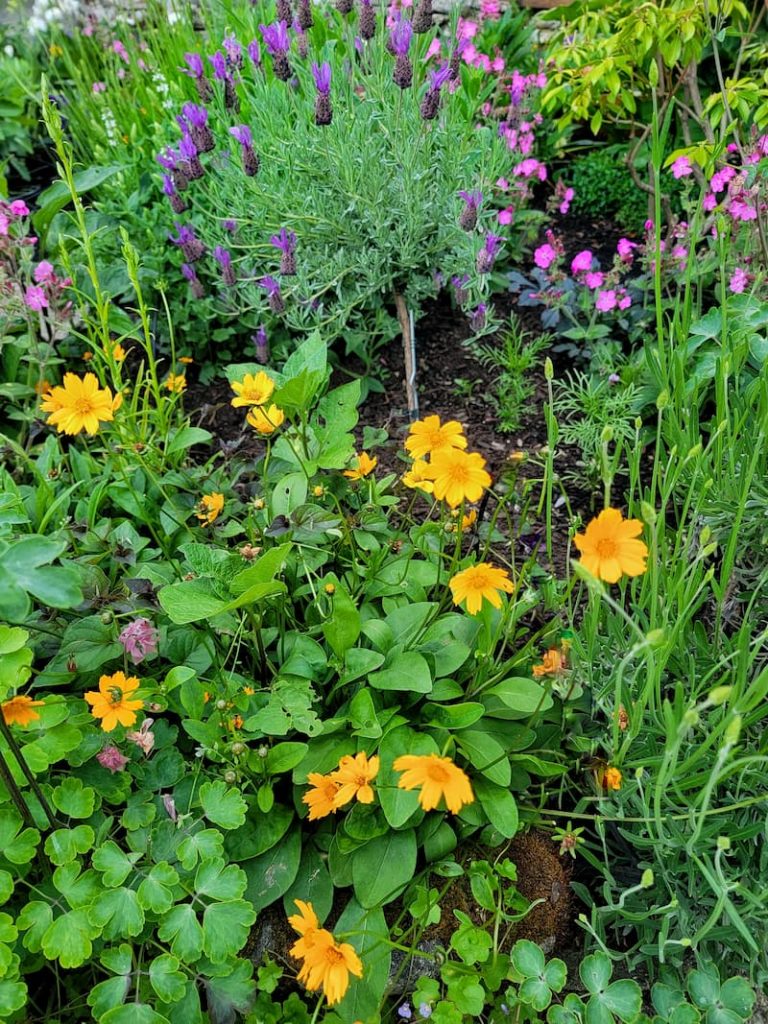
Tickseed (Coreopsis)
While tickseed primarily blooms in late spring and summer, many varieties produce a second flush of flowers in the fall, extending their blooming season.
These daisy-like flowers add a burst of color and vibrancy to your cottage garden as summer transitions into autumn.
The common name for this perennial actually comes from the appearance of the seeds, which look like little ticks. Tickseed is available as an annual or perennial, and there are hundreds of species, as well as many cultivated hybrids.
| Hardiness Zones | 2-11 |
| Features | attracts pollinators | low maintenance |
| When to Plant | spring to early fall |
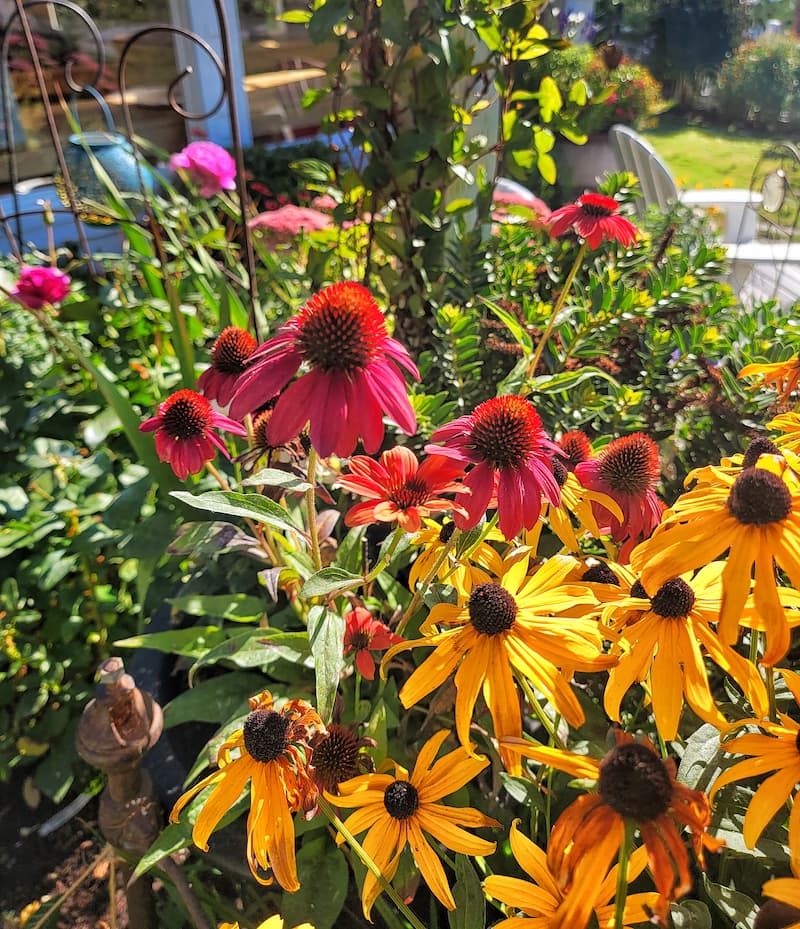
Fall Perennial Maintenance
Caring for perennials in the fall cottage garden is essential to ensure their health and vitality through the winter months and into the next growing season. Here are some tips on how to care for perennials in the fall.
Cut Back Spent Foliage and Flowers
As your perennials finish blooming in late summer or early fall, trim back the spent flower stalks and remove any dead or yellowing foliage. This helps prevent diseases and makes the garden look neater.
Divide and Transplant
Early fall is an excellent time to divide and transplant perennials that have become overcrowded or outgrown their space. This promotes better growth and rejuvenates the plants.
Continue Watering
Continue to water your fall perennials as needed, especially if there’s a dry spell. Proper hydration is crucial for them to establish strong root systems before winter.
Reduce your watering frequency as the weather cools. Perennials need less water in the fall, but it’s still important to ensure they receive adequate moisture, especially for those planted recently.
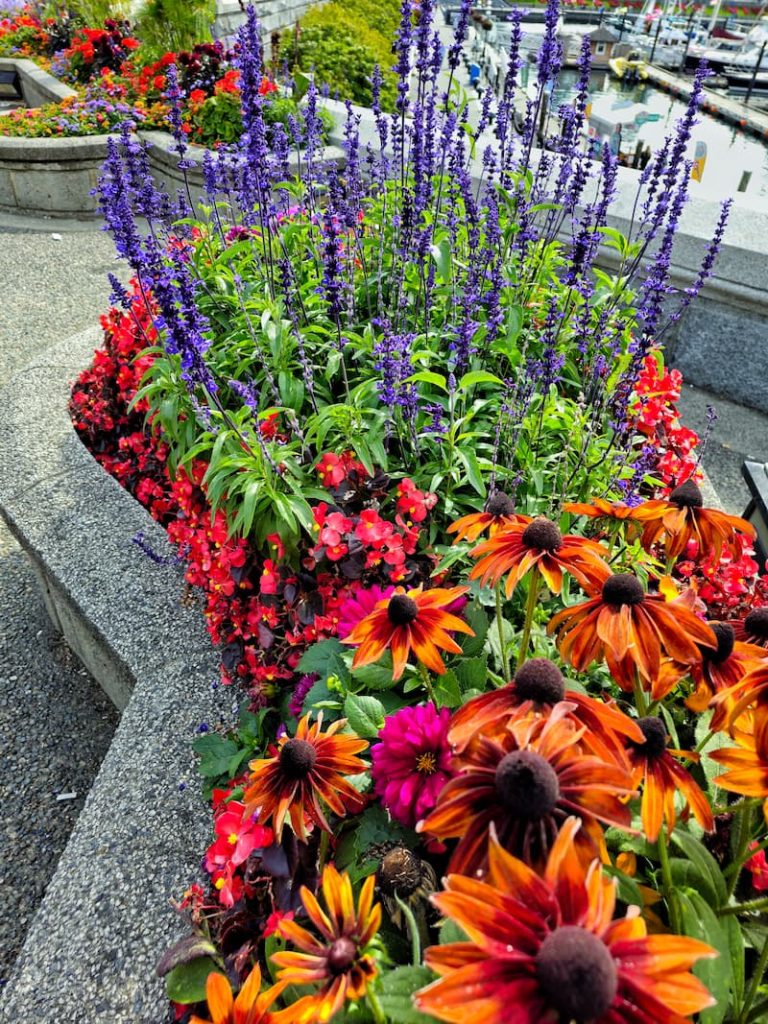
Apply a Layer of Mulch
Apply a layer of mulch around the base of your perennials to help conserve soil moisture and insulate the roots from temperature fluctuations.
Use a few inches of organic mulch, like wood chips, fallen leaves, or straw, but avoid piling it up against the plant stems.
Fertilize Your Fall Perennials
In early fall, you can apply a balanced, slow-release fertilizer to your perennials to provide them with essential nutrients for the coming season. Follow the manufacturer’s instructions for the specific fertilizer you’re using.
Protect from Frost
Keep an eye on the weather forecast and be prepared to protect your perennials if frost is expected. Covering them with blankets, burlap, or frost cloth can help prevent damage.
Remove Weeds
Fall is an excellent time to tackle any weeds that have popped up in your garden. Weeds can compete with perennials for nutrients and water.
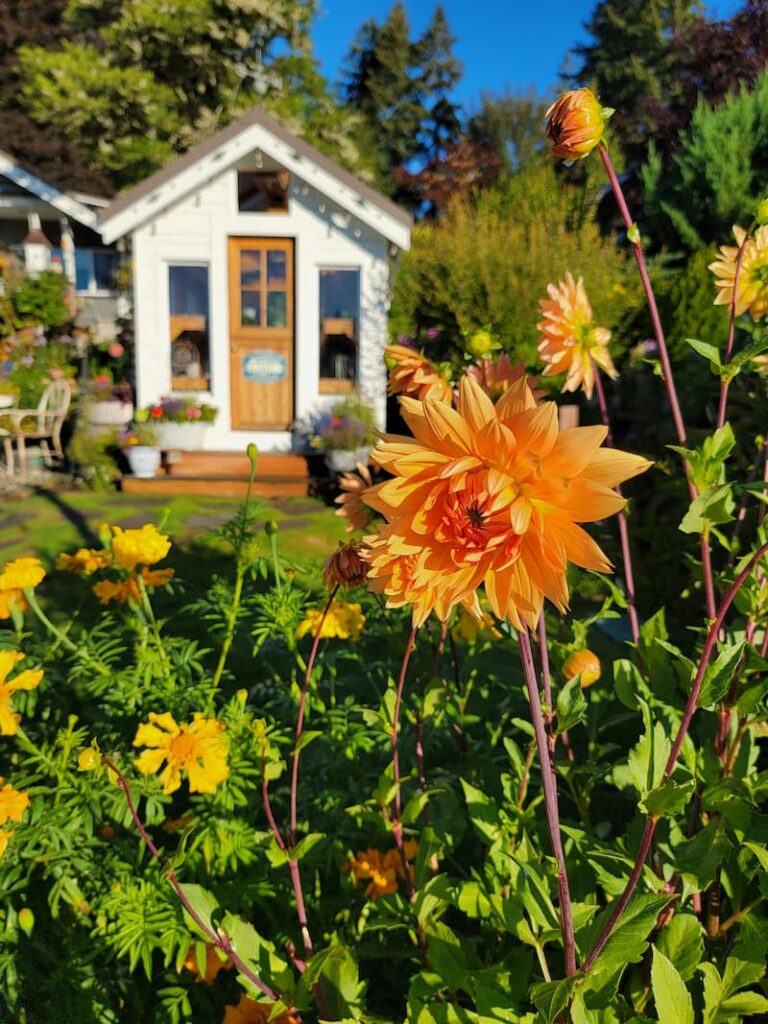
Disease and Pest Management
Inspect your perennials for signs of disease or pest infestations. Address any issues promptly with appropriate treatments or pruning of affected areas.
Leave Some Seedheads
While you should deadhead spent flowers, consider leaving some seedheads on certain perennials to provide food for birds during the winter months.
Consider Fall Planting
If you’re looking to add new perennials to your garden, fall is a great time to plant. The cooler temperatures and moist soil conditions allow the plants to establish roots before winter.
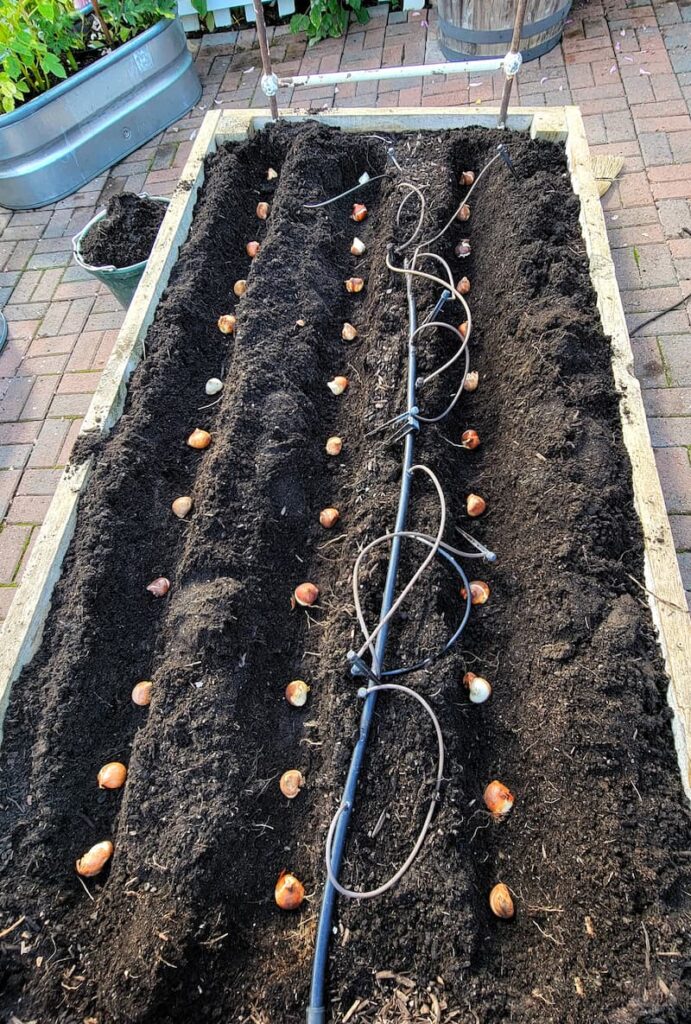
Plant Spring-Blooming Bulbs
Fall is the time to plant your spring bulbs, such as tulips, and daffodils.
Bulb planting in the fall is one of the easiest ways to ensure a colorful and stunning spring flower garden. You’re basically laying the groundwork in the fall season for your spring garden.
Plan for Spring
Use the fall season to plan for next spring. Take notes on what worked well and what didn’t in your garden, and consider any changes or additions you’d like to make.
By providing proper care for your perennials in the fall, you’ll help them prepare for winter dormancy and set the stage for a healthy and vibrant garden in the following growing season.
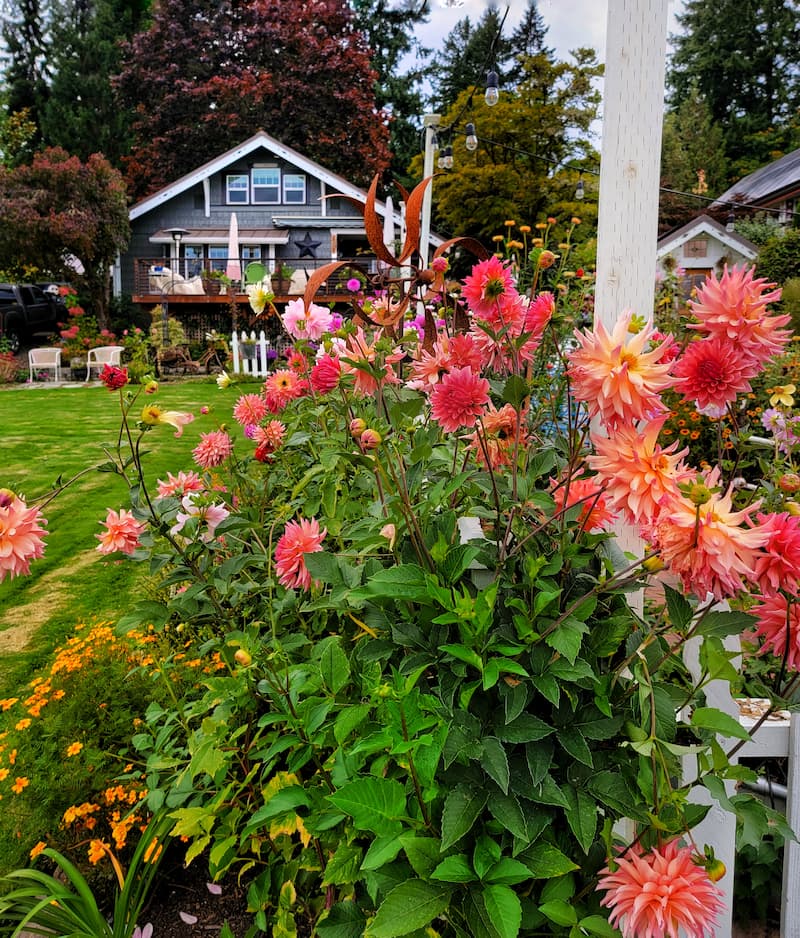
Common Questions About Late-Blooming Perennials
What Perennials Should Not Be Cut Back in the Fall?
While many perennials benefit from having their spent foliage and flower stalks trimmed back in the fall, some should not be cut back until spring or should be left largely untouched for various reasons. Here are some perennials that you should generally avoid cutting back in the fall:

Are There Perennials You Can Plant in the Fall?
Yes, you can plant certain perennials in the fall, and in some regions, it’s an ideal time to do so. Fall planting allows perennials to establish their root systems before winter, giving them a head start for the following growing season. Here are some perennials that you can plant in the fall:
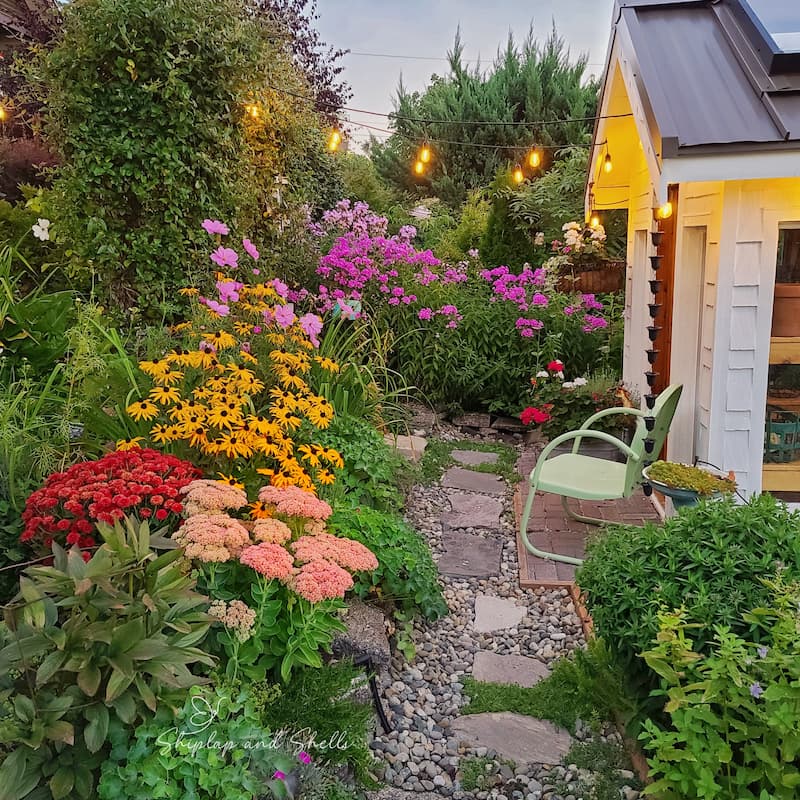
Is It Best to Plant Perennials in the Fall?
Planting perennials in the fall can be an excellent choice in many regions, but whether it’s the “best” time depends on various factors, including your local climate and the specific perennial species you want to plant. Here are some considerations to help you determine if fall is the best time for planting perennials:
Advantages of Fall Planting:
Considerations for Fall Planting:
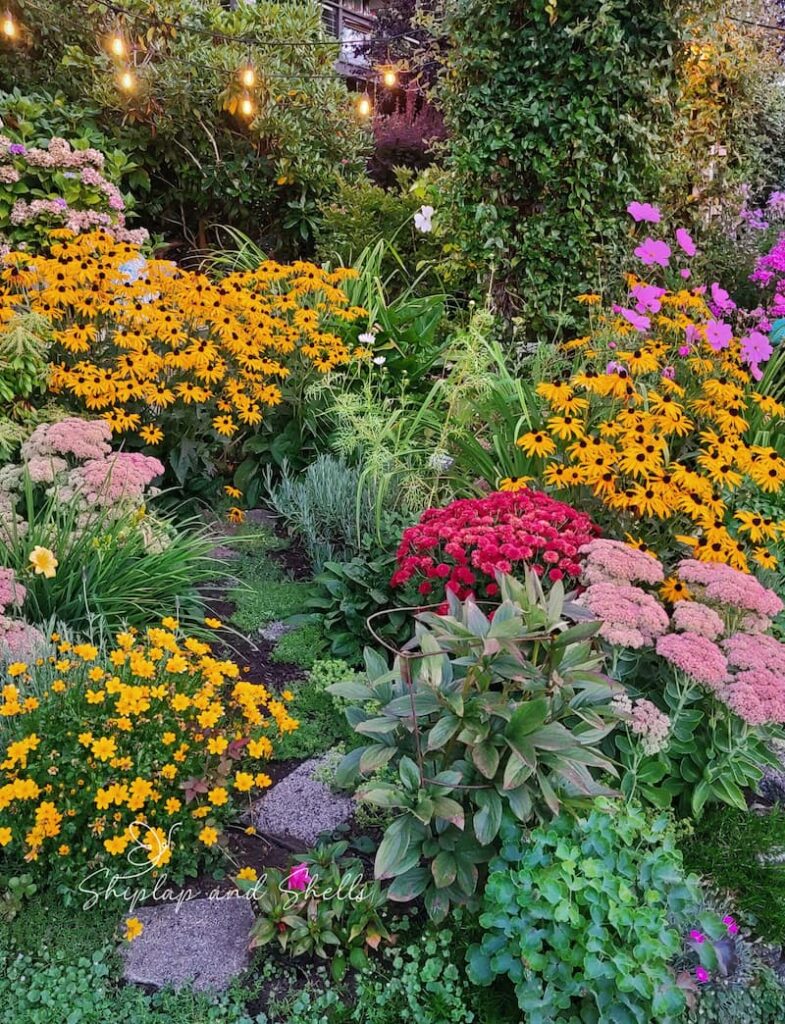
Is October Too Early to Cut Back Perennials?
In many regions, cutting back perennials in October is an appropriate and timely task. However, the timing for cutting back perennials can vary depending on your specific climate and the types of perennials you have in your garden.
Here are some general guidelines to help you decide whether October is the right time for cutting back your perennials:
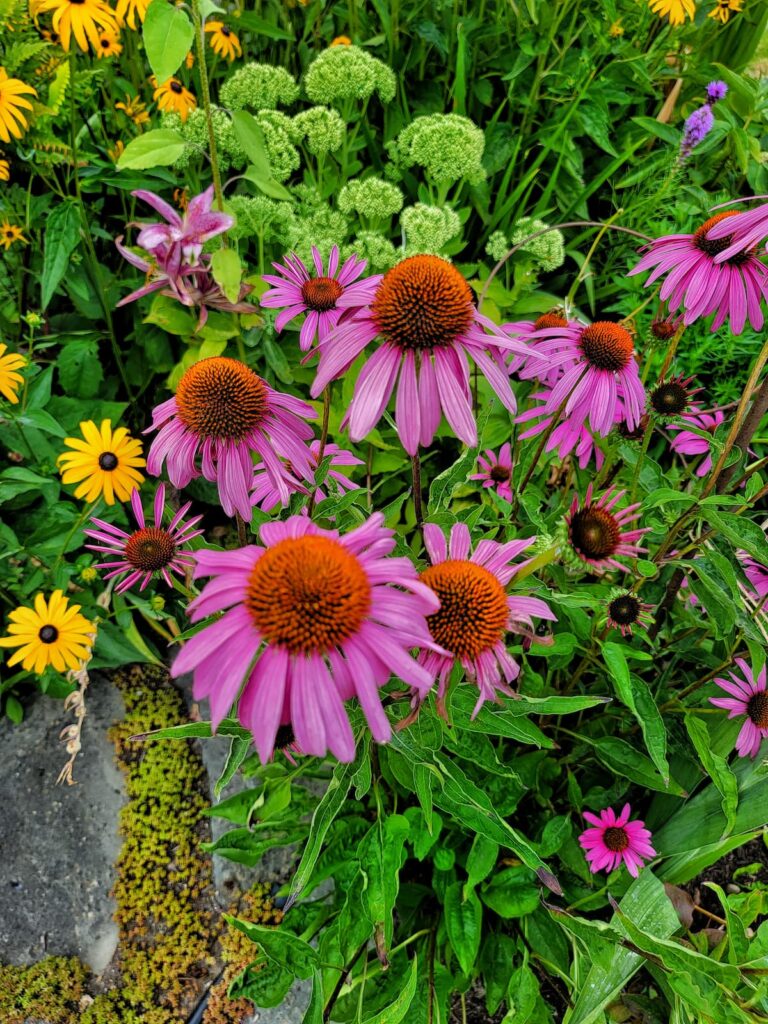
Have you found some fall perennials you’d like to plant in your cottage garden?
Not only will your autumn garden spaces look vibrant and beautiful with these flowering plants mixed in with your other shrubs, but the local wildlife will be supported as well.
If you have any questions or additional suggestions, please share them in the comments below. And be sure to share this blog post link with anyone who may find these gardening tips useful.
Until next time,
Happy Fall Gardening!

I’m a self-taught hobby gardener. Everything I share on my blog is my personal opinion and what has worked for me.
Follow Me for More Inspiration
Shop my Amazon Storefront, LTK sources, and my favorite home decor, garden, and lifestyle products. When you purchase from one of my links, I earn a small commission, which helps me continue sharing all the content you expect on my blog.
Be sure to follow me on Pinterest, Instagram, Facebook, TikTok and LIKEtoKNOW.it. Do you like gardening? Join my Facebook Gardening Tips & Tricks group.

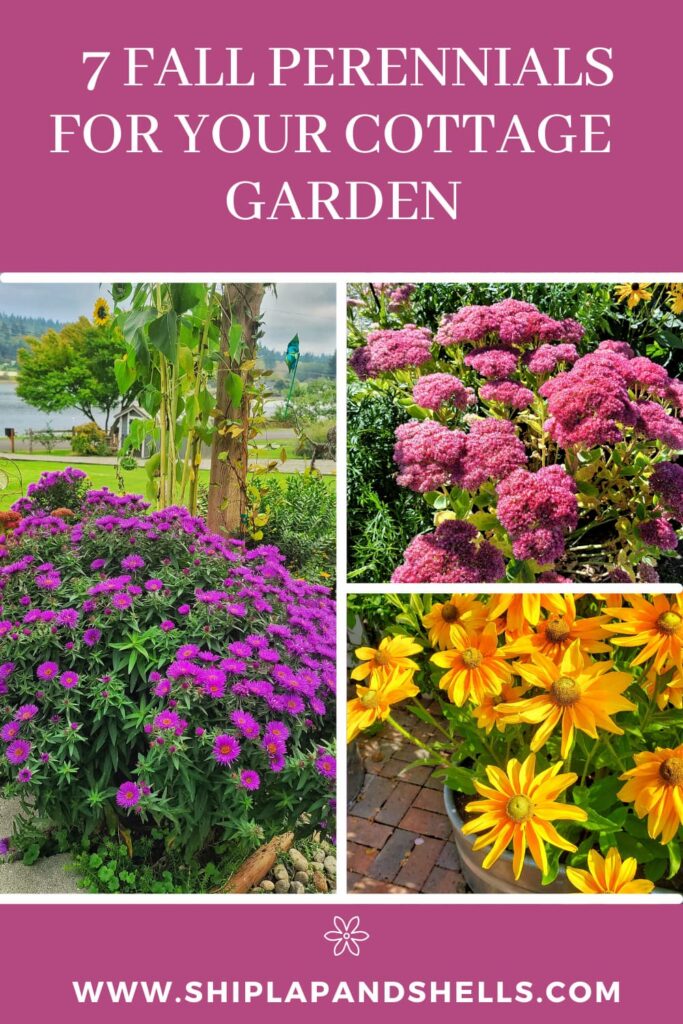

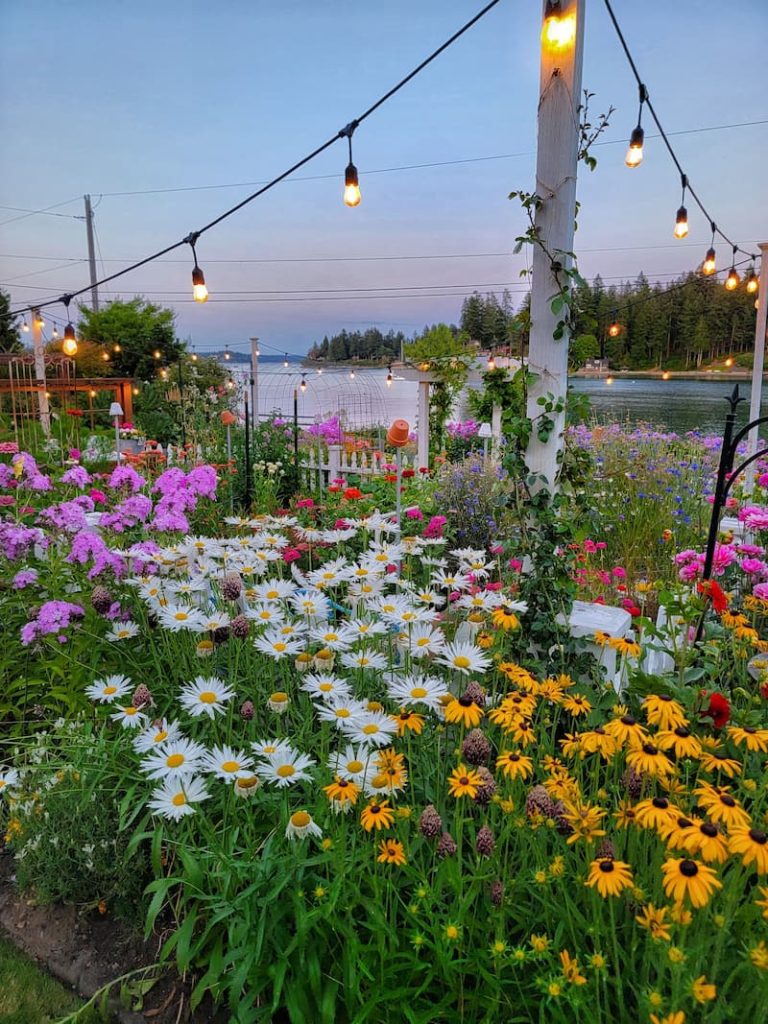
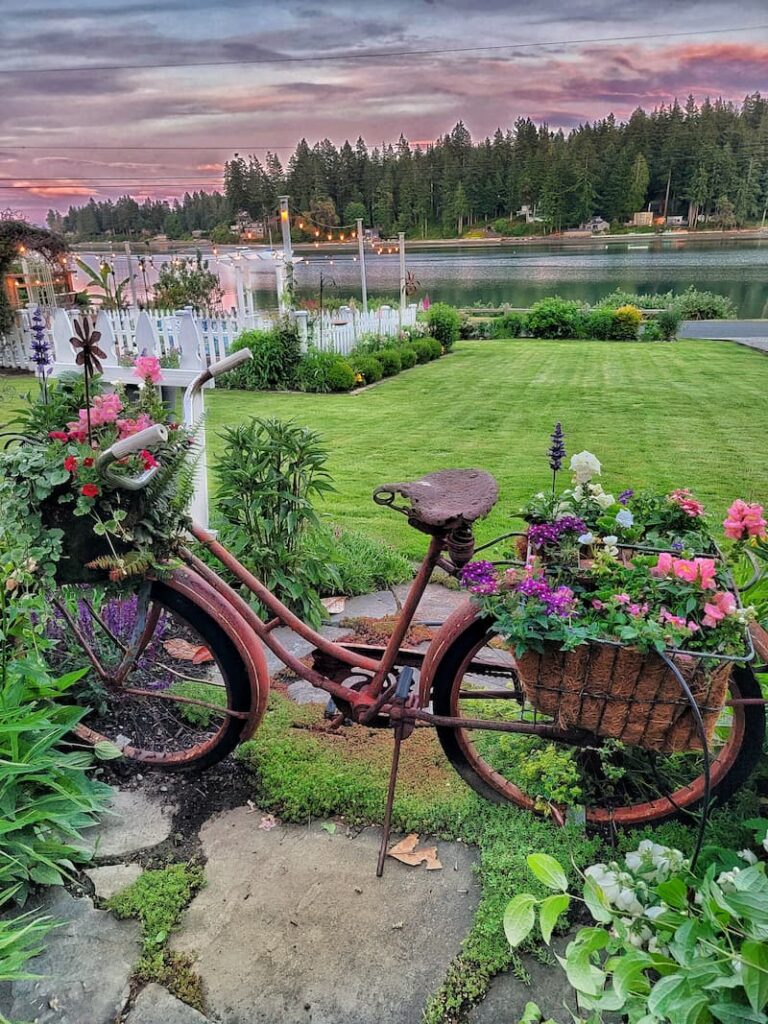
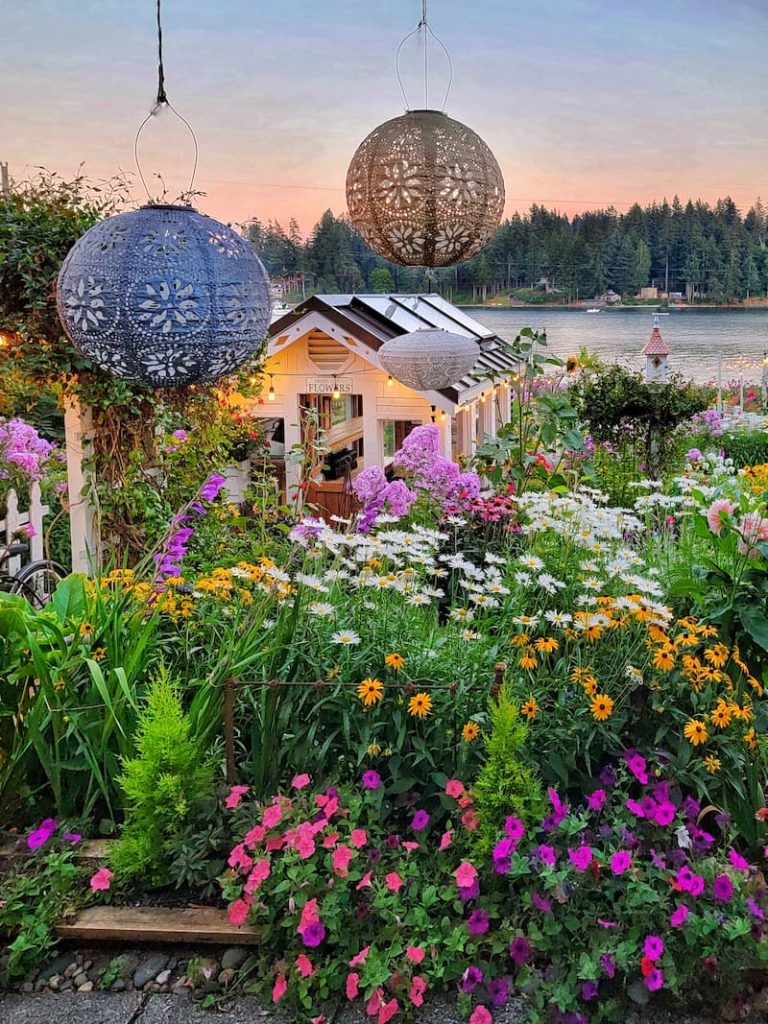
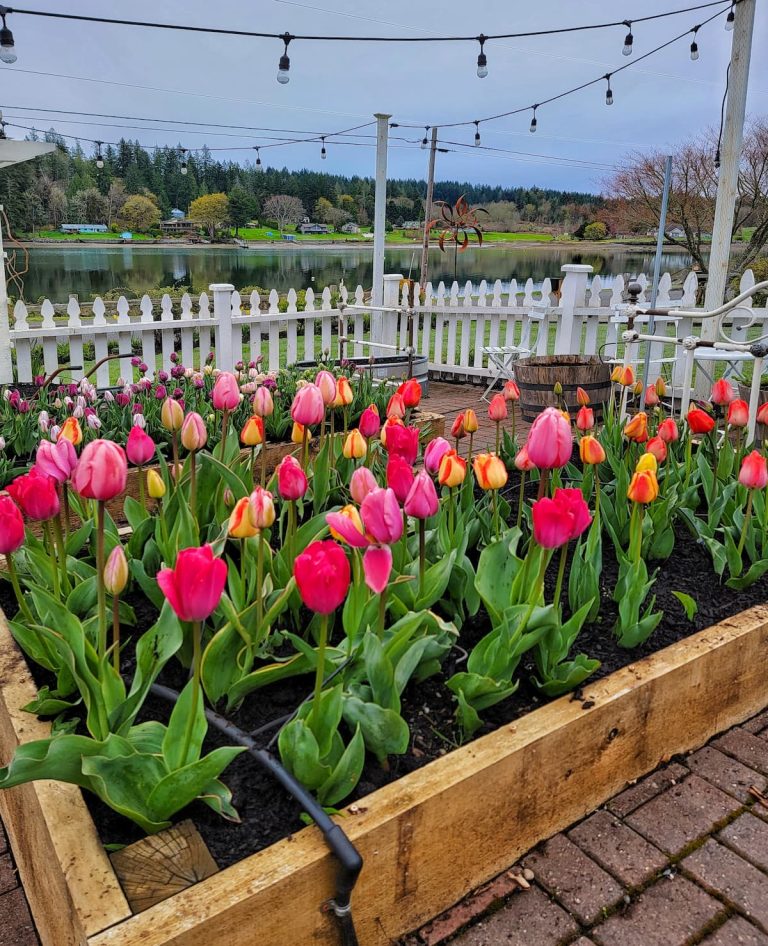
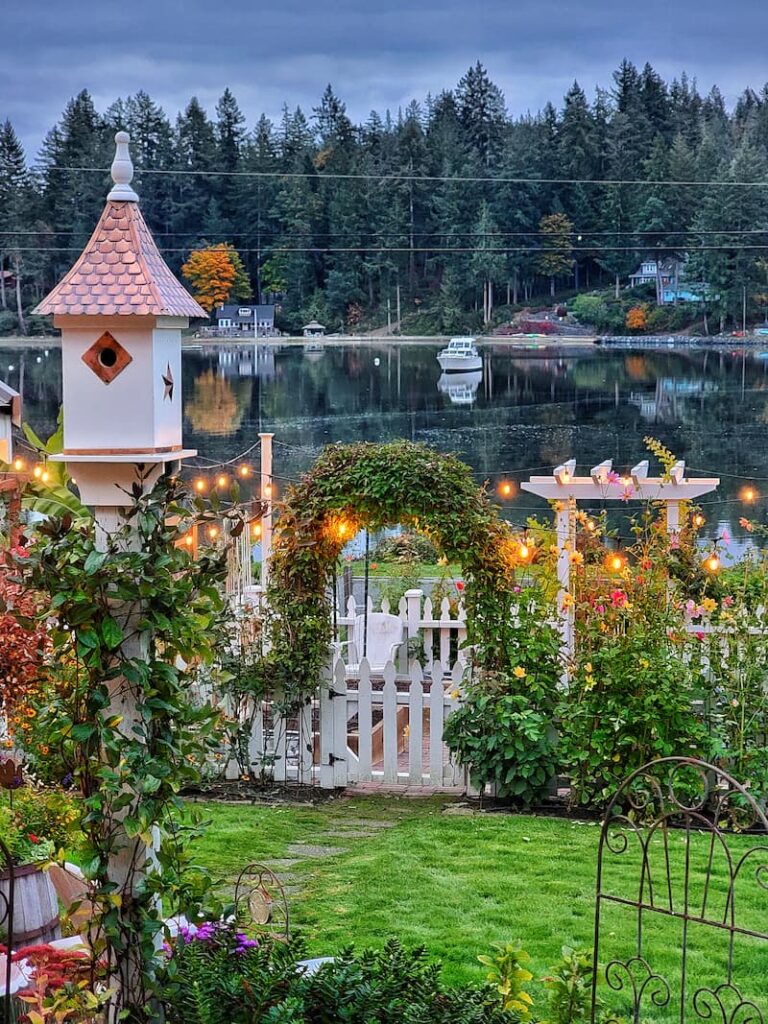
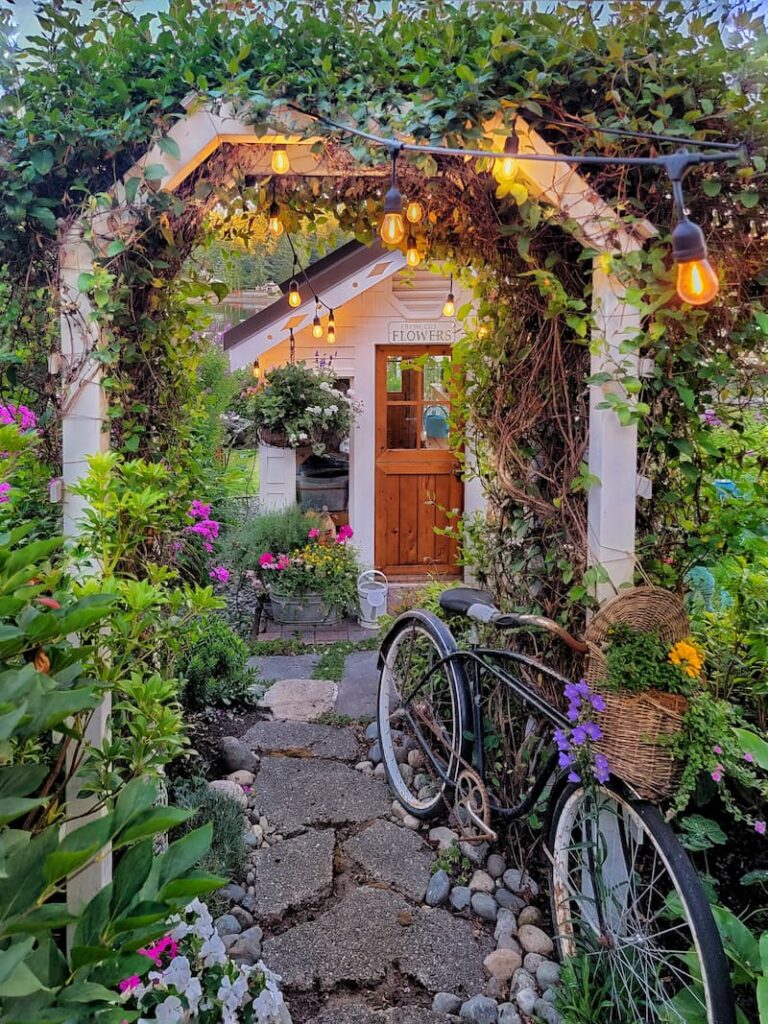
One word – Gorgeous! Okay, two – divine!
Enjoying from afar……
That Japanese anemone! Wow! I need that one in my life!
I would love to get different colors other than pink for fall. Thanks for stopping by Melba!
Kim,
I love all these ideas. Thanks so much for sharing!
Thank you, Rachel!
Kim, love all the fall recommendations. I am loving those Japanese Anemones. Those flowers will be added to my list to add into my perennial garden. Your gardens are amazing!
Thank you, Tammy! I am really loving the Japanese Anemones and will have to look for more colors to add to the garden.
Beautiful Kim we planted a few of these flowers last year and I’m loving the Sedum too. It’s so beautiful ?
Thank you, Ann! I am starting to add sedum to my flower arrangements now and they look so beautiful!
Your blog is very enjoyable to read with each posting. However the last flower looks like a coneflower. I am not familiar with it as a tickseed. I love coneflowers and the colors are so vibrant. Thank you for sharing your ideas.
Thank you, Helen. I actually forgot to add the picture of the Tickseed and you have reminded me, so thank you! Yes, you are definitely looking at a coneflower.
Kim I love each and every one of these flowers. I wish we lived closer so we could share our stock! I have Japanese anemones but its a different variety than yours. So pretty!
Wouldn’t that be the most fun, to share each other’s divides?